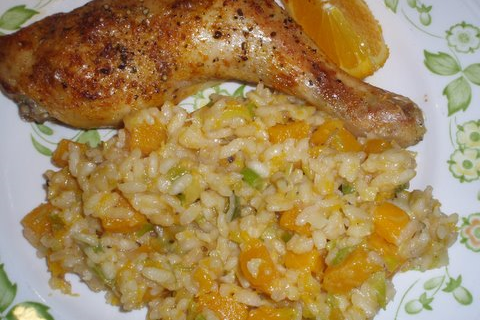Adapted from an article by Judith Yamada, Kitchen Maven
You’ve probably heard the old saying “you are what you eat,” right? Well, if you want to be more sustainable, a good place to start is in your own kitchen. Here are some simple suggestions to help you factor in the environmental, economic and social impacts of the foods you put on your plate:
WHEN POSSIBLE:
- Learn about what’s IN SEASON where you live, the closer the better.
- Grow a garden of the foods you love. And purchase, pick, or gather fresh foods, during harvest season, to freeze, dry or can for later use.
- Become a member of a CSA (community supported agriculture) farming operation by purchasing a share from a local farm. In doing so, you purchase a portion of the season’s bounty and support the farm’s efforts. In return for your financial support, early in the season, the farmers plant and nurture an assortment of vegetables, herbs, sometimes fruit and flowers. They harvest the produce at its peak of flavor. You pick it up, fresh and convenient!
- Buy seafood from local fishers instead of the supermarket. It supports your community and it tastes better. And look for Fair Trade and organic brands that are distributed close to home and provide a living wage for workers.
- Support farms that raise animals humanely with space to move about freely. When buying organic, look for a certification like Oregon Tilth or USDA Organic to ensure they meet standards. These standards include protecting natural resources, conserving biodiversity and using only approved substances.
- Be easy on yourself. We’re all busy and can’t always cook everything “fresh.” So buy canned or frozen foods that are simply processed. They have similar nutritional values of fresh options. Use them with fresh ingredients. In the winter, I sometimes sauté diced red peppers and garden chives with canned organic corn. It’s fresh tasting and colorful.
REMEMBER:
- Read your labels to know what you’re really purchasing, as some products may have confusing claims. There are smartphone apps available that can help with deciding what to buy and/or tracking what you eat.
- Wash all fruits, herbs and vegetables before consuming or cooking, including organic choices.
- Some food, organic or not, can be shipped from long distances, which is a factor for a food’s overall carbon footprint. The fuel used to transport the food has an impact on our environment.
- Lastly, don’t feel guilty about purchasing special foods that just can’t be produced locally. What would I do without coffee and chocolate? Don’t even want to think about that.
For information about sourcing locally sourced food and CSA programs visit foodrootsnw.org or call 503.815.2800. For more Wellness tips visit tillamookcountyhealthmatters.org and Tillamook County Wellness on Facebook.
Here’s a start. Why not try the following simple, delicious recipe for Winter Squash and Leek Risotto. It takes a bit of time, but the vegetable cooking can be done ahead. The results are impressive and comforting. And, after preparing and eating this healthy seasonal meal, you’ll find more pleasure in that cuppa joe and single serving brownie you enjoy for dessert.
Squash & Leek Risotto
Original recipe by Kitchen Maven
Serves 4
3 cups cooked and peeled butternut squash*, cut in 1” cubes
2 medium sized leeks
4 Tablespoons extra virgin olive oil – divided
1 ½ cups Arborio rice
1 cup dry white wine
1 quart mushroom OR vegetable broth
¾ teaspoon Kosher salt
½ teaspoon freshly ground black pepper
¼ cup freshly shredded Parmesan cheese
Carefully wash the leeks. Cut off root ends and the dark green tops. Discard these and use only the white and lighter green parts of the leeks. Cut them in half lengthwise. Slice coarsely. Put 2 Tablespoons olive oil into a 12” saucepan. Heat the oil on medium heat just until you see it ripple. Add the leeks. Cook about 4 minutes, stirring often. Remove leek slices from pan.
Add 2 Tablespoons olive oil to the same pan. Again, heat the oil until it begins rippling; add the rice, coating it with oil and stirring often for 3 or 4 minutes. Slowly stir in the wine until most of it is absorbed.
In a 2-quart saucepan, heat all of the broth. With a ladle, add ½ cup of the broth, to the rice, at a time, stirring slowly but constantly until most is absorbed. Continue adding ½ cups of broth, and stirring until all the broth has been absorbed into the rice. It will take about 20 – 25 minutes to do this, so get ready to chill for a while. Add salt and pepper. Stir and taste for seasoning.
Add the cooked leeks and squash back to the rice. Stir to heat, for about 4 minutes. Stir in the cheese and enjoy.
*To cook the squash in the microwave:
Add ½ cup water to a round microwave safe cake pan or pie pan. Cut the squash into chunks about 5” square, and place flesh side down in pan. Cover loosely with waxed paper and microwave on high for 4 minutes. Check for doneness. Rotate pan and microwave an additional 3-5 minutes, as needed. Cool completely and remove rind with a sharp paring knife. Cut the squash into 1” cubes.

